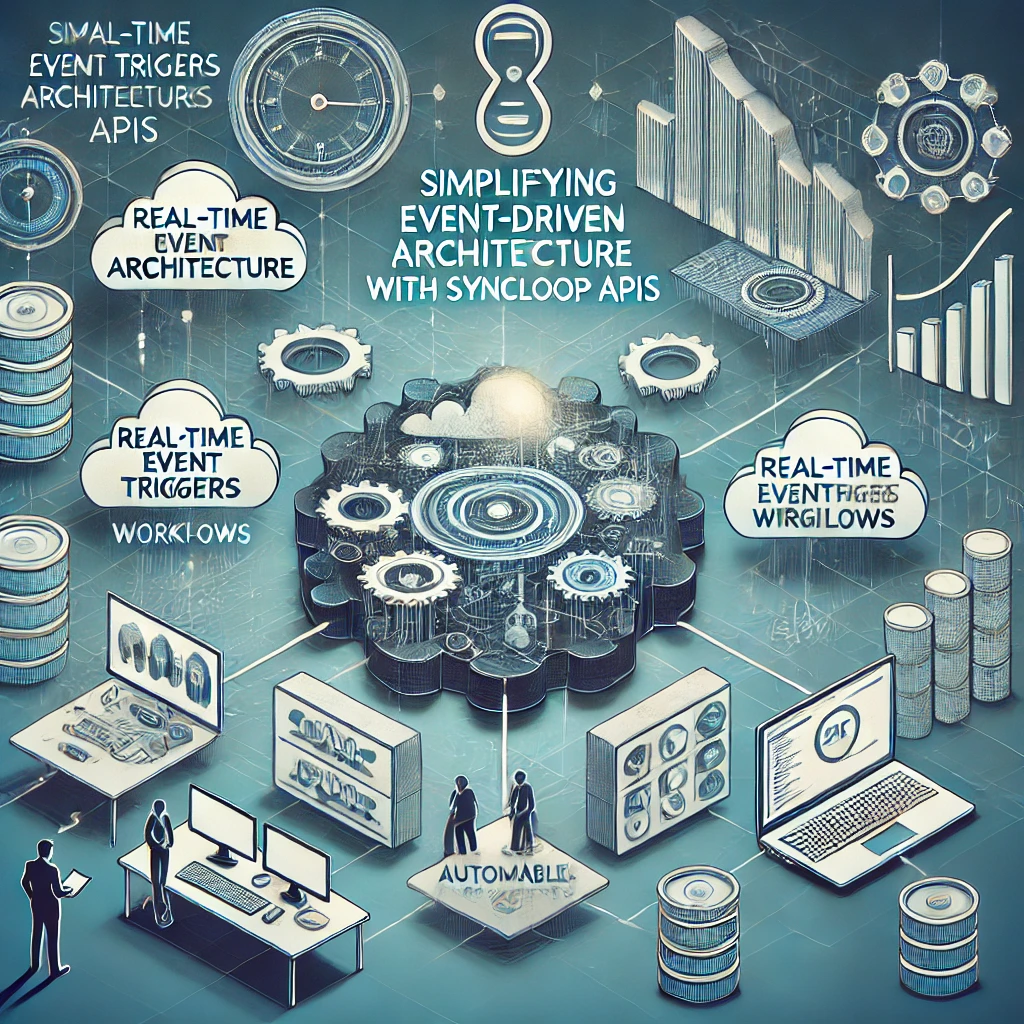Simplifying Event-Driven Architecture with Syncloop APIs

Syncloop provides a robust platform for creating and managing APIs tailored for event-driven architectures. With features like real-time event handling, automated workflows, and dynamic routing, Syncloop simplifies the development process and enhances application performance. This blog explores how Syncloop enables event-driven architecture and offers best practices for implementation.
Benefits of Event-Driven Architecture
- Real-Time Responsiveness: Process and react to events instantly for faster decision-making and improved user experiences.
- Scalability: Handle growing event volumes and concurrent processes seamlessly.
- Decoupled Systems: Enable independent services to communicate via events, reducing system dependencies.
- Flexibility: Adapt workflows dynamically to evolving requirements or user behaviors.
- Efficiency: Optimize resource usage by processing events only when necessary.
How Syncloop Simplifies Event-Driven Architecture
1. Real-Time Event Processing
- Use WebSocket APIs and message brokers to handle events in real time, ensuring low-latency responses.
2. Dynamic Routing
- Route events dynamically to the appropriate workflows or services based on event attributes.
3. Workflow Automation
- Automate actions triggered by events with Syncloop’s visual workflow designer, reducing manual intervention.
4. Integration with Event Streams
- Seamlessly connect APIs to event streams like Kafka, RabbitMQ, or cloud-native services for distributed event handling.
5. Scalable Infrastructure
- Scale APIs automatically to accommodate fluctuating event loads and traffic spikes.
6. Monitoring and Alerts
- Track event processing metrics in real time to ensure performance and reliability.
7. Security Features
- Implement role-based access control (RBAC), encryption, and authentication to secure event-driven APIs.
Real-World Applications of Syncloop for EDA
1. IoT Systems
- Process sensor data in real time to trigger alerts, analytics, or automation workflows.
2. E-Commerce Platforms
- Handle user interactions like clicks, searches, or purchases to deliver personalized recommendations and dynamic pricing.
3. Financial Services
- Detect and respond to fraud, market fluctuations, or transaction patterns instantly.
4. Smart Cities
- Enable real-time monitoring and control of urban infrastructure, such as traffic lights or energy grids.
5. Healthcare Applications
- Trigger alerts or automated actions based on patient vitals or diagnostic results.
Steps to Build Event-Driven APIs with Syncloop
Step 1: Identify Events
- Define the events your application needs to process, such as user actions, system updates, or external triggers.
Step 2: Design Workflows
- Use Syncloop’s visual tools to create workflows that respond to specific events.
Step 3: Connect Event Streams
- Integrate Syncloop APIs with event brokers or streaming platforms for seamless event ingestion.
Step 4: Enable Dynamic Routing
- Configure routing rules to direct events to the appropriate services or endpoints based on their attributes.
Step 5: Monitor Performance
- Use Syncloop’s real-time dashboards to track event processing and identify potential bottlenecks.
Step 6: Scale Infrastructure
- Leverage Syncloop’s auto-scaling capabilities to handle increased event loads efficiently.
Best Practices for Event-Driven Architecture
- Design for Decoupling: Keep services independent to enhance scalability and reduce interdependencies.
- Ensure Event Consistency: Use schemas and validation to maintain data integrity across event streams.
- Optimize Routing: Implement efficient routing strategies to minimize latency and maximize throughput.
- Monitor Continuously: Track event processing metrics to ensure system reliability and performance.
- Secure Data: Protect event streams and APIs with robust encryption and access control.
- Document Workflows: Maintain clear documentation for event workflows and dependencies.
Conclusion
Event-driven architecture is transforming how applications process data and respond to user interactions. Syncloop simplifies EDA with tools for real-time event processing, workflow automation, and dynamic routing, enabling developers to build scalable and responsive systems effortlessly.
Whether you’re managing IoT ecosystems, e-commerce platforms, or smart city applications, Syncloop provides the features and flexibility to create robust event-driven APIs. Embrace Syncloop to streamline your architecture and unlock the full potential of event-driven systems.
A conceptual visualization of event-driven architecture powered by Syncloop, showcasing real-time event processing, dynamic workflows, and monitoring dashboards.
Back to Blogs